Redwood City is the home of many Wildcats, but is also one of the most historic cities in the Bay Area. From elaborate homes to architectural marvels, there is lots to explore.
In 1856, Redwood City, originally a port town during the Gold Rush, was laid out by Simon M. Mezes, and initially called Mezesville. Re-named Redwood City in 1867, for its redwood-lumber business, it is much different today than it was in its youth.
The Sequoia Hotel, located at 800 Main Street, was built in 1912 on the sight of the former Eureka Brewery, which burned down after the 1906 San Francisco Earthquake, of a staggering 7.9 magnitude.
“The town needed a first-class hotel since the 1906 earthquake destroyed the existing one,” Dee Eva, who works for the San Mateo County History Association, said. “The hotel cost more than $100,000 to build, which was quite an expenditure at that time.”
Measuring 100 ft by 100 ft, the three-story brick building was beautifully decorated and elegantly furnished.
“Every two rooms had a bath and hot and cold water,” Eva continued. “There were public restrooms on each floor, and off the ground, floor lobby was a dining room and a public restaurant.”
The hotel had three parlors located on the second and third floors and was used for social events and business meetings. The two stories also hold up to 60 guests. “There have been tales of President Herbert Hoover staying at the hotel when he visited Redwood City and rode in the 4th of July parade,” Eva shared.
These rumors have since been proven false, however, as President Hoover was not in Redwood City in 1912. Redwood City has been updating for decades, catering to its’ residents’ necessities. In the late 1850s, the need for a cemetery in the then blossoming town was quite prevalent.
Redwood City’s Union Cemetery, built-in 1859, was the first cemetery association in California and is home to many pioneers. In the six acres, there are 2,400 people from various walks of life. The cemetery has a Facebook page and guided tours from Redwood city resident Kathy Kliebes.
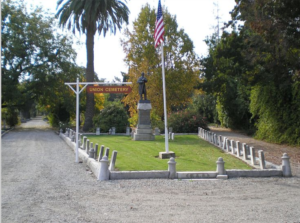
“Before the creation of Union Cemetery, 13 of Redwood City’s residents were buried on the property that is now the site of Sequoia High School,” Eva stated. “When Horace Hawes took over the property, he no longer wanted the dead to be buried there and wanted all 13 bodies exhumed and moved elsewhere.”
On the lot, there are many tombstones, including some that date back to the Mexican-American war, which lasted from 1846 to 1848. These gravestones allow visitors a peek into the lives of past Redwood City residents.
According to the Climate Magazine, such residents include James Bannon, reportedly nicknamed “Mountain Jim,” who died at the age of 52. After a drinking bout, Bannon fell asleep in a barn and was smothered by multiple sacks of oats that shifted and fell on top of him. There are also many graves for younger children, like the death of a 4-month-old Albert Bennett in 1907, who passed away from ‘tuberculosis of the bowels.’
Many important Civil War veterans and important war figures peacefully reside at Union Cemetery, as well.
“The souls buried in the Union Cemetery led rich and colorful lives as pioneer families” Eva explained. “In addition, there are more than 40 Civil War veterans who are buried in the old soldiers’ plot established by the Grand Army of the Republic.”
Some notable graves at Redwood City’s Union Cemetery include early pioneer of Cooley Landing and East Palo Alto, Lester Phillip Cooley (1837–1882), John Howell Sears (1823–1907), an early pioneer of Searsville and La Honda, and Sarah Wallis (1825–1905), an early settler in California and the first president of the California Woman Suffrage Educational Association.
Over the years the cemetery had fallen into disrepair but is now doing much better.
“Today the Union Cemetery is overseen by the Historic Union Cemetery Association (HUCA),” Eva said. “This non-profit corporation was formed in March 1993 to promote the preservation, restoration, and maintenance of the Union Cemetery Historic Site.
Volunteers now spend time at the cemetery to preserve this important and historic location by maintaining and cleaning the headstones, tending to the grounds, and pruning the roses.
Along with the Sequoia Hotel and Union Cemetery, there is an abundance of historic locations in Redwood City, one being the Finger Farm House, built by August Finger in 1854.
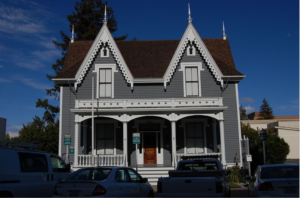
“There are numerous walking tours you can take of historic homes in Redwood City” Eva finished. “The booklet, Redwood City Historic Tours, is interesting, informative, and a fun way to spend an afternoon. Also, there is a large green book called, ‘Redwood City-A Hometown History,’ that I think is enjoyable. You can find a copy at the Redwood City library.”
One such landmark is the Lathrop house, built in 1858. The house has had multiple owners including Mary C Lathrop, who bought and built the house that is still standing today, as well as others like Joel Mansfield, and Civil War Union General, Patrick Edward Connor.
The house was constructed in the gothic revival style, which was becoming more popular at the time, with tall gables and arches pierced by quatrefoil designs. More specifically, it was designed in the steamboat gothic style designed to resemble the steamboats of the era.
Next to the Lathrop House is the San Mateo County Museum, which was Redwood City’s fourth courthouse.
“In the early 1900s, a third courthouse was planned, one with an imposing architectural presence; they planned a building with a dome and with marble,” Carmen Blair, the deputy director of the San Mateo County Historical Association, said. “It was to be built behind the 1882 courthouse; the board of supervisors accepted the building in February of 1906. The portico was not yet completed and the building could not even be occupied before the 1906 earthquake occurred. The dome that was the highlight of the building was not securely fastened at the base and it swung back and forth destroying the new building.”
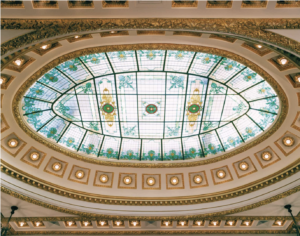
A rebuild was quickly approved and under new architect, Glenn Allen, the courthouse was finished. Nicknamed the “Temple of Justice,” the building features a large stained-glass dome, influenced by Italian Renaissance architecture like Brunelleschi’s dome in Florence, Italy. It is decorated with marble, eagles, and union crests.
“The interior of the dome is 80 feet high, and it’s 40 feet wide. I’m told that it has 38,240 pieces of stained glass in it,” Blair continued.
The building had three courtrooms, two vaults, and office space for many government officials. In 1998, the building became a museum and two courtrooms were converted into museum space where exhibits on The Internment of Japanese Americans at Tanforan, The Immigrant Experience in San Mateo County, Charles Parsons’ Ships of the World, and Peninsula Sports Hall of Fame, offer an insight into life and general interests in the county.
Other notable locations in Redwood City include the schools in the Sequoia Union High School District, which most elementary schools and middle schools in the area filter into. Woodside high school, established in 1958, has changed a bit over the years as well.
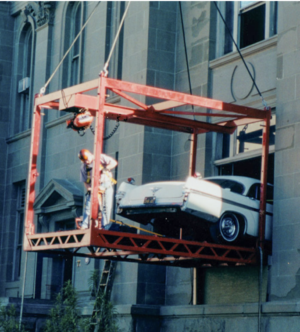
“There was no admin building,” Woodside PE teacher, Laura Perdikomatis, said. “That was just the same as the rest of the D-wing. There was also no J-wing. There was no turf and the track was dirt.”
Woodside also featured an open campus letting the student body eat at restaurants around San Mateo County.
“We had 1400 students here and an open campus,” Perdikomatis continued. “We would be driving off campus to any restaurant. We would go down to Allatikins, Roberts, and Jack in the Box. There’s like the three that we got, because we didn’t have much time.”
But, back then, Redwood City was much different than it is now. A lot of existing restaurants and sites downtown were not there.
“It was called– I don’t know if they may still call it this –a bad word,” Perdikomatis recalled. “It was called ‘Deadwood Shitty’… There was really nothing there, and we didn’t spend any time downtown”
The Fox Theater in downtown Redwood City opened its doors in 1929 and was initially built by Ellis John Arkursch to show motion pictures. Arkursch got his inspiration for the theater’s unique architecture while touring Europe, gathering ideas for the Moorish and gothic style of the theater.
“The Fox Theater was there,” Perdikomatis, remembered. “It was a real movie theater. I saw the movie Airplane there, which is a classic comedy.” She grew up and spent her whole life in Redwood City, attending Woodside High School in her youth.
Fox Theater was also a hotspot for big Hollywood industry figures throughout the years. Some notable names include Etta James, Chris Isaak, and Neil Young.
City officials noticed the negative stigma Redwood City’s downtown had received and in 2006 the Fox Theater was replaced with a Cinemark theater with 20 screens as well as various shops. Now downtown thrives, featuring many restaurants as well as live music in the square.
As Redwood City continues to move into the future, it is important for us as residents to continue to learn the rich and interesting history of the city we live in and preserve it for the years to come.


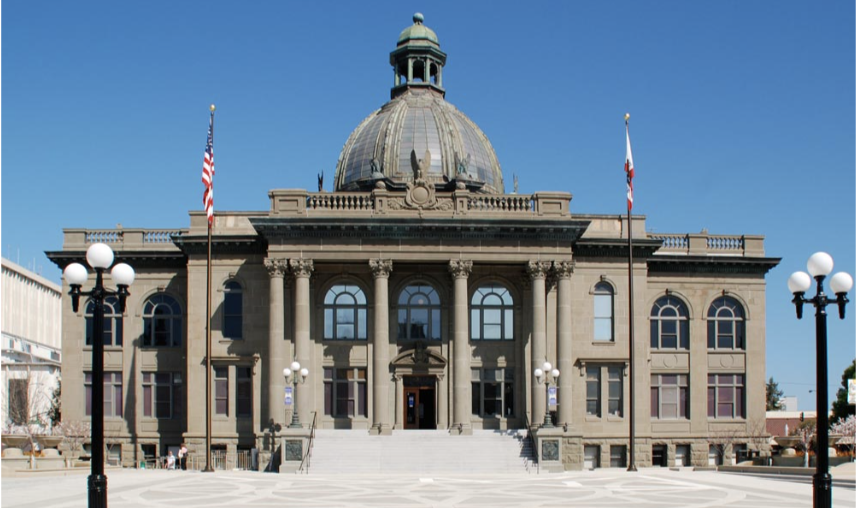
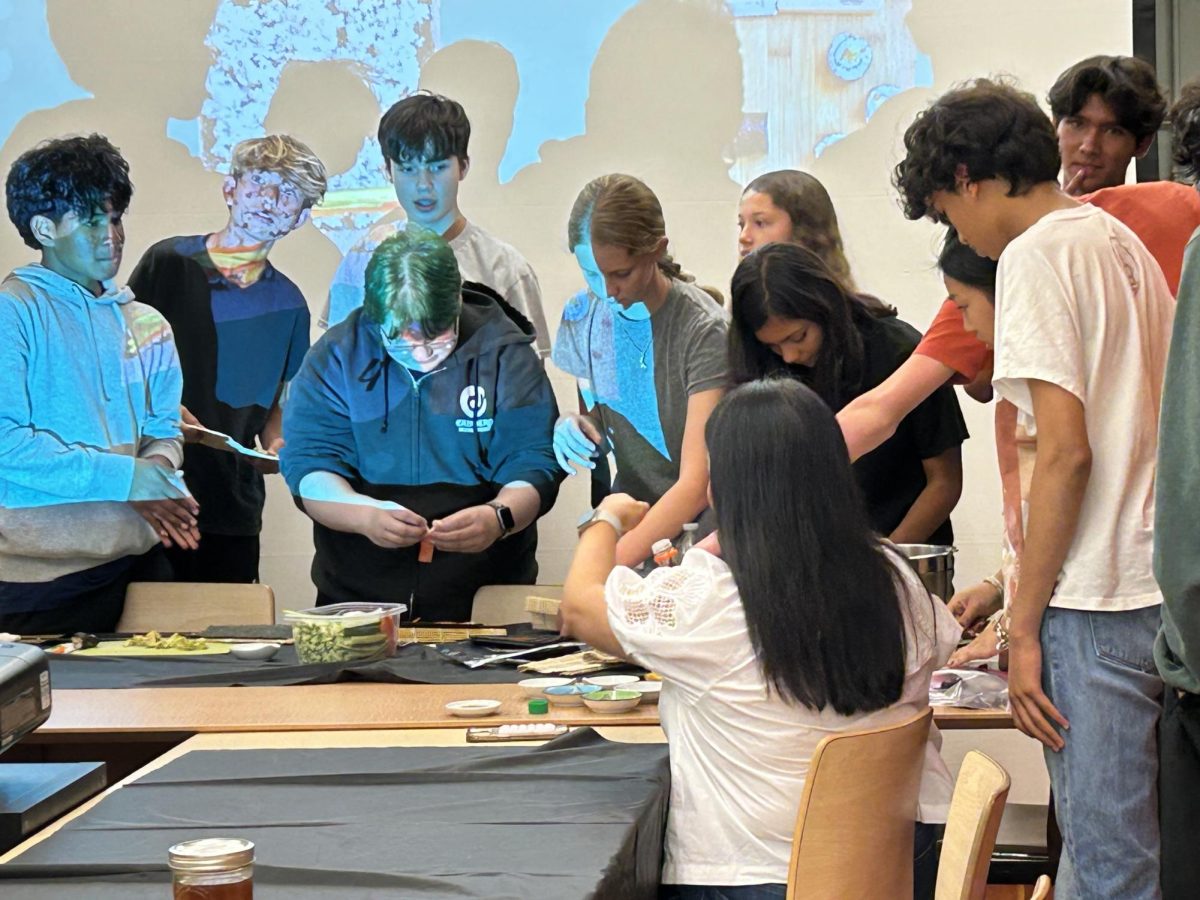







Francisco Lopez • Apr 17, 2022 at 12:45 PM
Really.great story and the pictures are fantastic where can I add my pictures of Redwood City to add to your selection.
Cedrik Von Briel • Apr 27, 2022 at 1:04 PM
Feel free to send em over to [email protected] and we’ll see if we can get them published!
– Cedrik von Briel, Managing editor
Woodside Paw Print
Jim Gatten • Apr 17, 2022 at 9:36 AM
How about some above ground near the theater handicapped ♿️
Parking…it is the law!
If you don’t know or would care to enlighten the mayor, city council or bureaucrats it is called the American Disability Act.
Again it’s the law and it’s being ignored!
Thank you.